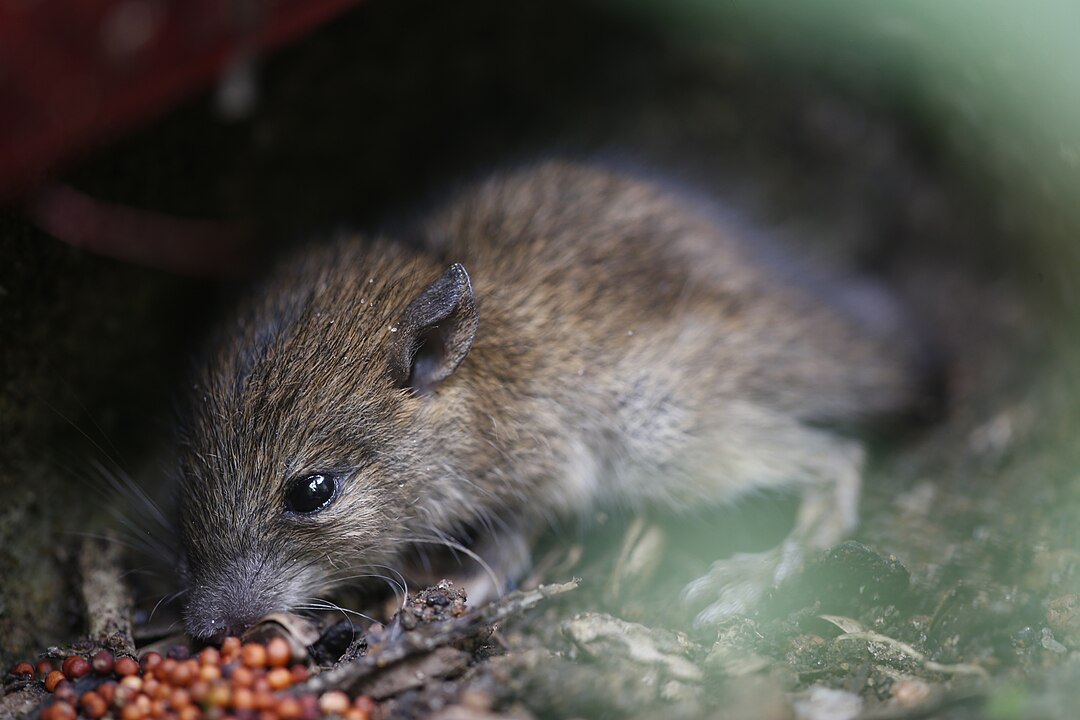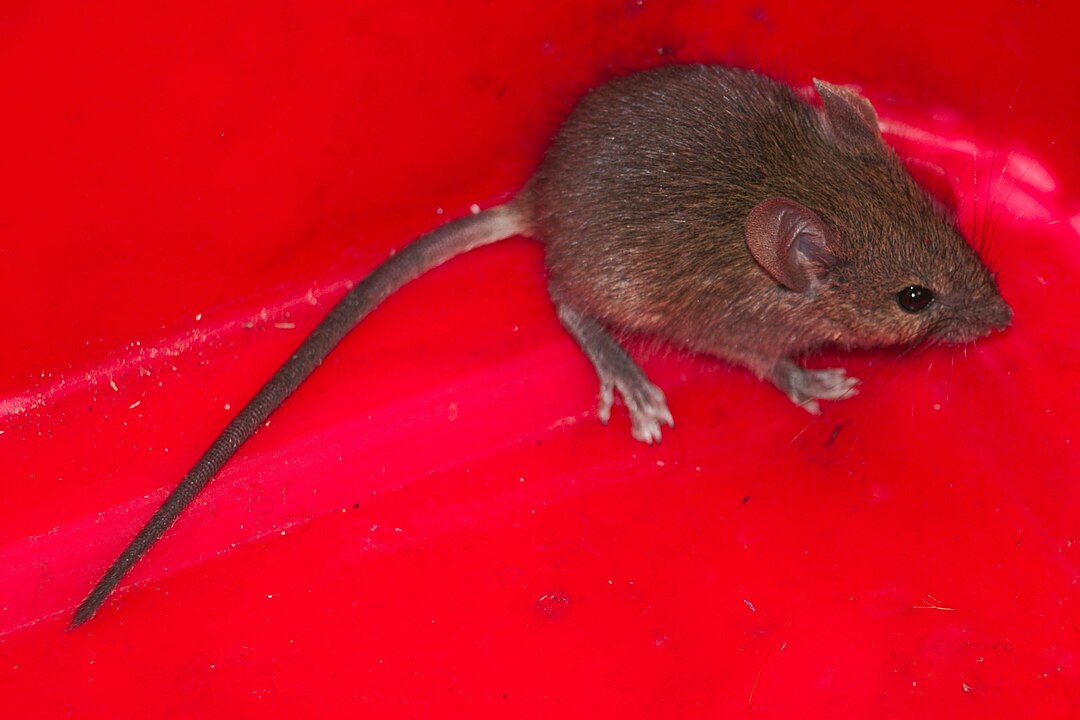House Mouse
The House Mouse is the most common mouse species to invade homes. Typically grayish-brown with a lighter underside, these mice are about 2.5 to 3.5 inches in body length with a similar tail length. They're adaptively omnivorous but primarily feed on grains. House mice prefer to nest in dark, secluded areas and often use shredded paper or other fibrous material for nest building. They're known to reproduce rapidly and can cause significant damage by chewing on various materials and contaminating food.
Field Mouse (Wood Mouse)
The Field Mouse is prevalent in rural areas and often ventures into homes during colder months. With a slightly larger build than the House Mouse, the Field Mouse is distinguishable by its big black eyes and longer, almost translucent ears. While they mainly feed on seeds and insects, they won't hesitate to nibble on anything inside a home. They are agile climbers and often find refuge in attics or upper levels of buildings.
Deer Mouse
Deer Mice are easily identifiable by their bi-colored fur, with brownish-red upper bodies and white undersides, resembling the coat of a deer. Typically ranging from 3 to 4 inches, they have tails that can be equally long. While they predominantly consume seeds, fruits, and insects, they might invade homes in colder weather in search of warmth and food. It's crucial to manage Deer Mice promptly as they are known carriers of the Hantavirus.
Cotton Mouse
The Cotton Mouse boasts a relatively large build among the Peromyscus species. Adults typically have a body length that varies between 3.5 to 5 inches. Its fur is an ashy gray-brown on the upper parts and transitions to a snowy white on the belly and feet. Cotton Mice are omnivores. Their dietary habits fluctuate seasonally. In spring and summer, they lean heavily on animal matter, such as insects, snails, and even small vertebrates. Their consumption shifts towards seeds, grains, and plant materials by autumn and winter. Cotton Mice predominantly inhabit wooded areas, preferring mixed hardwood forests, brushy fields, and marshy lands. They nest on the ground but are not buried, often utilizing natural coverings like logs, leaves, or other vegetation.
Western Harvest Mouse
Small and slender, the Western Harvest Mouse generally grows to a length of 2.5 to 3.75 inches, excluding its tail, which can equal the length of its body. Their dorsal fur is tawny to reddish-brown, with a paler belly, and they sport large, round ears that stand out against their petite frames. These mice are primarily granivorous, having a penchant for seeds and grains. However, they diversify their diet with small insects, especially during the breeding season when they require additional protein.
Western Harvest Mice thrive in open habitats like prairies, meadows, and grasslands. They're quite adept at constructing nests, usually spherical and made from grass, which they hang amidst tall grasses above the ground, providing them with safety from ground-based predators.
White-footed Mouse
The White-footed Mouse, often mistaken for the Deer Mouse, has a body length ranging from 3 to 4 inches. They exhibit reddish-brown fur on their back and sides, transitioning to a pure white underbelly and, as the name implies, white feet. Their bi-colored tails are relatively long and often covered in short hair.
White-footed Mice are omnivorous. They consume a varied diet of seeds, fruits, nuts, insects, and occasionally small invertebrates. They're known to store food for winter, often hiding seeds and nuts in burrows or other hidden caches.


